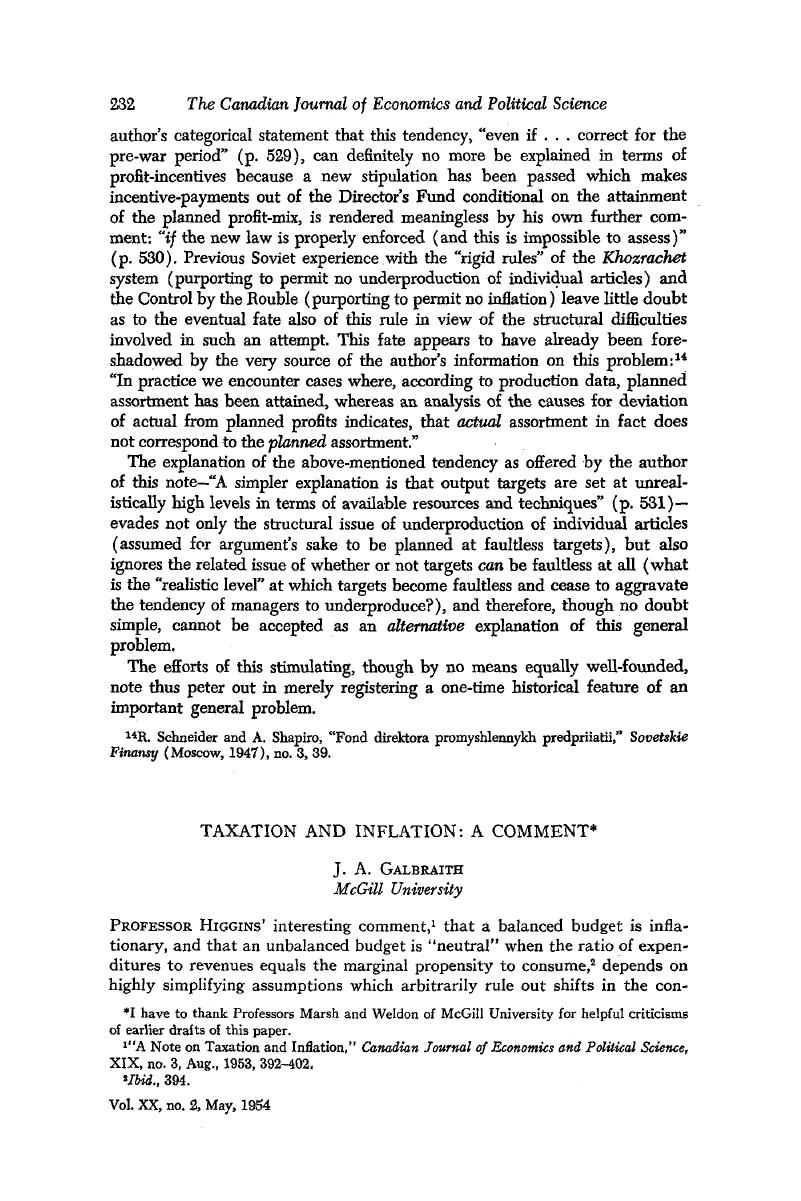No CrossRef data available.
Published online by Cambridge University Press: 07 November 2014

I have to thank Professors Marsh and Weldon of McGill University for helpful criticisms of earlier drafts of this paper.
1 “A Note on Taxation and Inflation,” Canadian Journal of Economics and Political Science, XIX, no. 3, 08, 1953, 392–402.Google Scholar
2 Ibid., 394.
3 Ibid., 394. Professor Higgins' crude symbolism is followed here for comparative purposes. Actually the variables should be dated and rates and quantities distinguished. E and T are assumed to be injected into the system as lump sums so that E = ΔE and T ≡ ΔT.
4 T and E may shift the consumption function by altering the existing distribution of incomes or by altering consumption behaviour itself, or by a combination of the two. It makes no difference here in what way E and T shift the consumption function.
5 Of course, E and T may shift the consumption function without altering the marginal propensity to consume. This possibility emerges as a special case in the following analysis.
6 There is no need to consider situations where E precedes T because the reasoning is the same as where T precedes E.
7 C t may not reflect any existing marginal propensity. It may instead reflect the attitude of people towards taxes. C t will then vary with people's decisions to substitute taxes for consumption or for savings without regard to any existing marginal propensity. C t then represents the proportion of T which comes from consumption funds when T directly affects behaviour.
If T does not affect behaviour, C t will represent the existing marginal propensity to consume of the taxpayers.
8 This special case arises from taxing either those people who have a marginal propensity to consume of one, or those people who will alter their behaviour, because of taxes, to meet taxes out of savings entirely. Then if tax revenues are spent by the government so as not to disturb the consumption function, a balanced budget is “neutral.”
9 Here it is the marginal propensity to consume which holds after T and E, and not before, which determines the surplus required for a “neutral” budget.
10 The effect of T on behaviour may be cyclical. In a deflationary situation people may substitute tax payments for spending, insisting on maintaining some absolute level of savings. In an inflationary situation they may persist in spending as much after taxes as before, meeting taxes out of savings. So the inflationary effect of a balanced budget may very well vary directly with the cycle, being less in the depression and greater in the boom.
11 In other words, if the government taxes the spenders (the advice often given in inflationary situations)—taking away money that would have been spent anyway—a balanced budget is “neutral”. This is the traditional view of the balanced budget: that it cuts down the spending of the private sector and replaces it exactly with the same amount of government spending—an exact substitution of public spending for private spending.
12 Perhaps this is the price that has to be paid for a highly progressive tax system—large surpluses in times of full employment to prevent inflation.